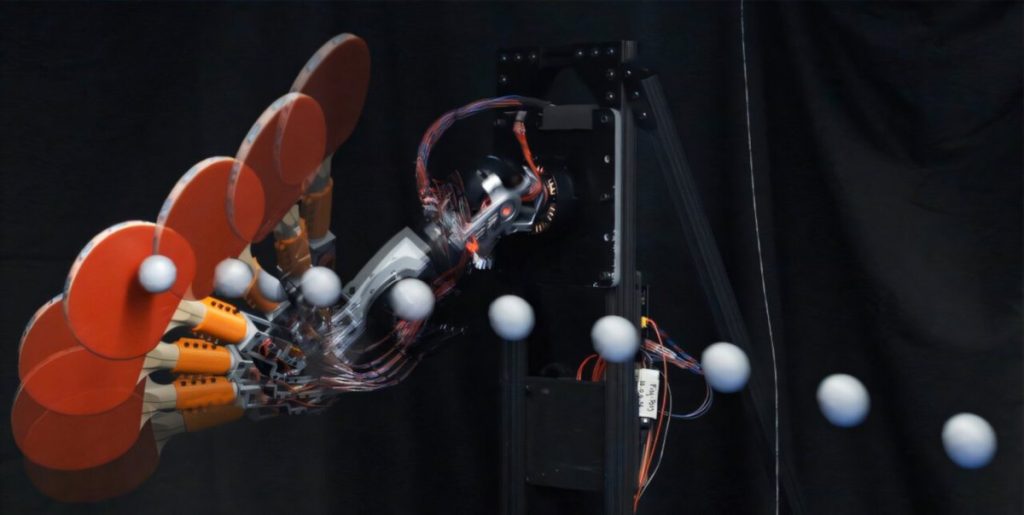Researchers at the Massachusetts Institute of Technology (MIT) have developed a robotic system that can return table tennis balls with high precision and accuracy. The table tennis robot can execute three different types of shots and is said to be the fastest in the world.
At its core, the robotic system for playing table tennis consists of a multi-jointed robotic arm with an additional degree of freedom for the “wrist”. The robot is attached to one end of a conventional table tennis table. The balls are observed and the robot is controlled externally. Several high-speed cameras distributed around the table monitor the ball movements. The researchers developed optimized control algorithms to determine the speed and orientation of the racket at which the table tennis ball should be hit back. The robot is capable of a total of three types of stroke: loop (also known as topspin), drive (for straight strokes) and chop (backspin), as can be seen from the study “High Speed Robotic Table Tennis Swinging Using Lightweight Hardware with Model Predictive Control”, which has been published as a preprint on Arxiv.
Precise and powerful
A total of three computers are required to process the camera images, assess the ball movement in real time, convert these assessments into a stroke movement and have them implemented by the electric motor-driven robot arm. The robot can not only predict how an incoming ball will hit, but the system can also calculate an exact target position for the returned ball and place it precisely in the generic field of the table tennis table.
Empfohlener redaktioneller Inhalt
Mit Ihrer Zustimmung wird hier ein externes YouTube-Video (Google Ireland Limited) geladen.
YouTube-Video immer laden
YouTube-Video jetzt laden
The researchers tested the table tennis robot by hitting 150 balls one after the other in the direction of the robot. Depending on the type of shot, the robot returned the balls with a roughly equal hit rate: 88.4 percent for loop strikes, 89.2 percent for chops and 87.5 percent for drives.
After optimizing the hitting algorithm and the reaction time, the robot was able to hit balls back at a speed of 20 m/s. According to the researchers, the robot achieves this faster than any other table tennis robot in the world.
On average, the robot achieves a hitting speed of 11 m/s. Experienced human players can hit table tennis balls between 21 and 25 m/s. According to the MIT researchers, they were able to increase the average hitting speed to 19 m/s by further optimizing the system after publishing the results.
Nevertheless, the table tennis robot has its limits. For example, it only has limited mobility and range. The robot can only return balls that arrive in a crescent-shaped area around the center line of the table. The researchers want to counter this in future by mounting the robot arm on a mobile platform. The aim is to extend the robot’s range so that it can cover a larger area of the table tennis table and return balls with greater variety.
(olb)
Don’t miss any news – follow us on
Facebook,
LinkedIn or
Mastodon.
This article was originally published in
German.
It was translated with technical assistance and editorially reviewed before publication.

